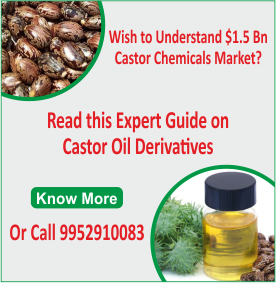Castor Oil Production, Extraction, Filtration, Purification & Refining
This section of CastorOil.in provides details and web resources on castor oil extraction.
Castor Oil Production
Castor seed is grown commercially on plantations but also harvested from wild plants. The seed must be hulled after harvesting. This can be done laboriously by hand or, more commonly, by machine. Small-scale hand-operated dehullers are available.
The seeds contain about 50 percent oil by weight. To extract the oil they must be crushed and pressed with hydraulic or continuous screw pressing at high or low temperature. High temperature hydraulic pressing yields 80 percent of available oil. Further solvent extraction can release much of the remaining oil.
Modification of the oil is achieved by a variety of chemical processes including oxidation, hydrogenation and thermal treatments to produce products for specific applications.
Castor Oil Extraction - Summary
Extraction of oil from castor seeds is done in a manner similar to that for most other oil seeds.The ripe seeds are allowed to dry, when they split open and discharge the seeds.
The seeds are dehulled after harvesting. Dehulling can be done by hand (laborious) or, more commonly, by machine. Small-scale hand-operated dehullers are also available.The dehulled seeds are cleaned, cooked and dried prior to oil extraction. Cooking is done to coagulate protein (necessary to permit efficient extraction), and for efficient pressing.
The first stage of oil extraction is pre-pressing, normally using a high pressure continuous screw press – called the expeller. Extracted oil is filtered, and the material removed from the oil is fed back into the stream along with fresh material. Material finally discharged from the press, called castor cake, contains 8-10% oil. It is crushed into a coarse meal, and subjected to solvent extraction with heptane to extract further oil.
Castor Oil Filtration & Purification – Summary
Once the oil has been extracted from the seed, it is necessary to remove impurities present in the oil. The filtration systems are designed to remove particulates, water, dissolved gases, and acids. The equipment that is normally used for filtration is a filter press.
Castor Oil Refining – Summary
The filtered oil (called the crude or unrefined oil) is sent to the oil refinery. The steps to refine the crude oil include:
|
Settling and Degumming of the Oil |
Neutralization |
Bleaching |
Deodorization of the oil |
|
Done to remove the aqueous phase from the lipids, and to remove phospholipids from the oil. |
The neutralization step is necessary to remove free fatty acids from the oil.
|
Bleaching results in the removal of coloring materials, phospholipids and oxidation products. |
Deodorization results in the removal of odour from the oil.
|








